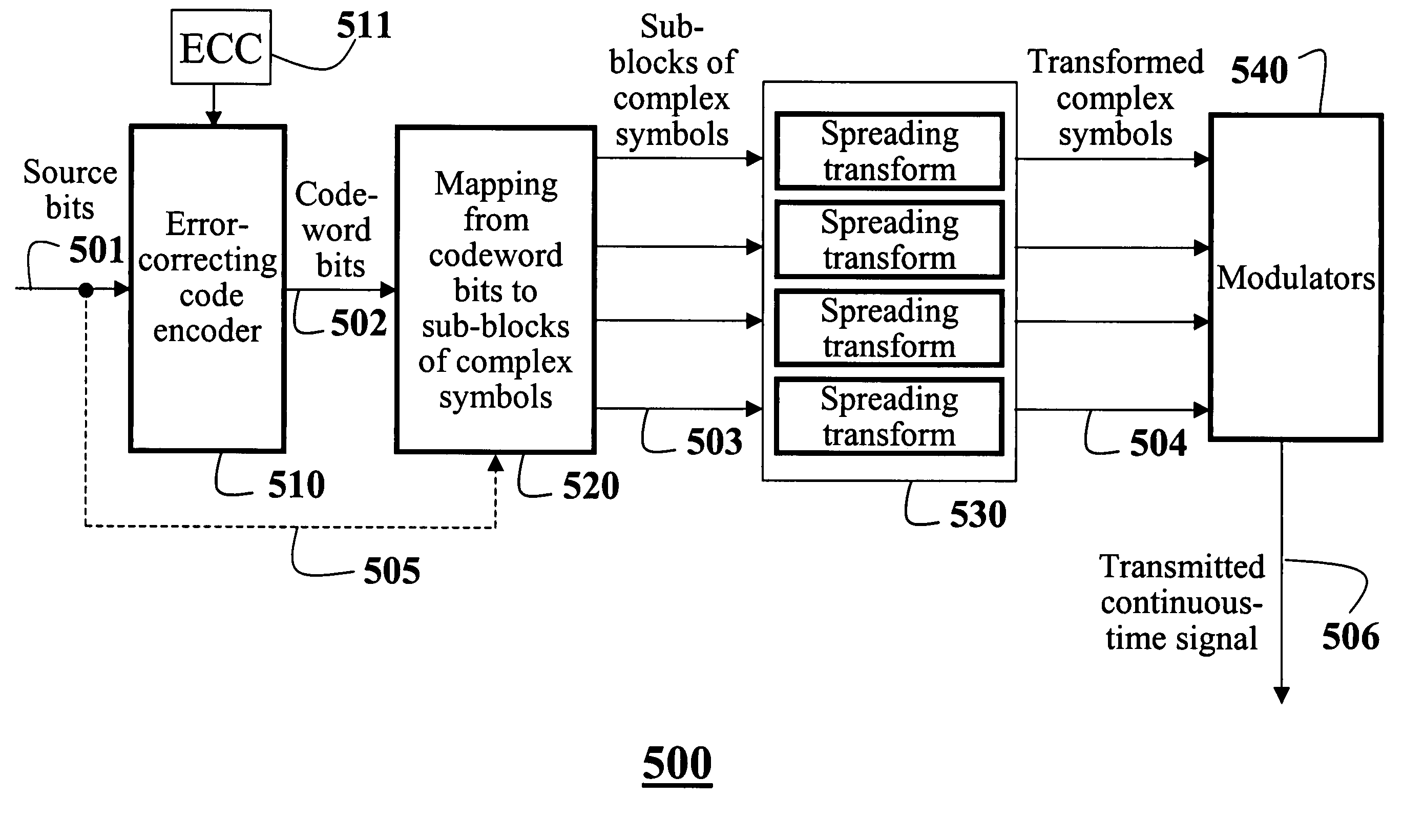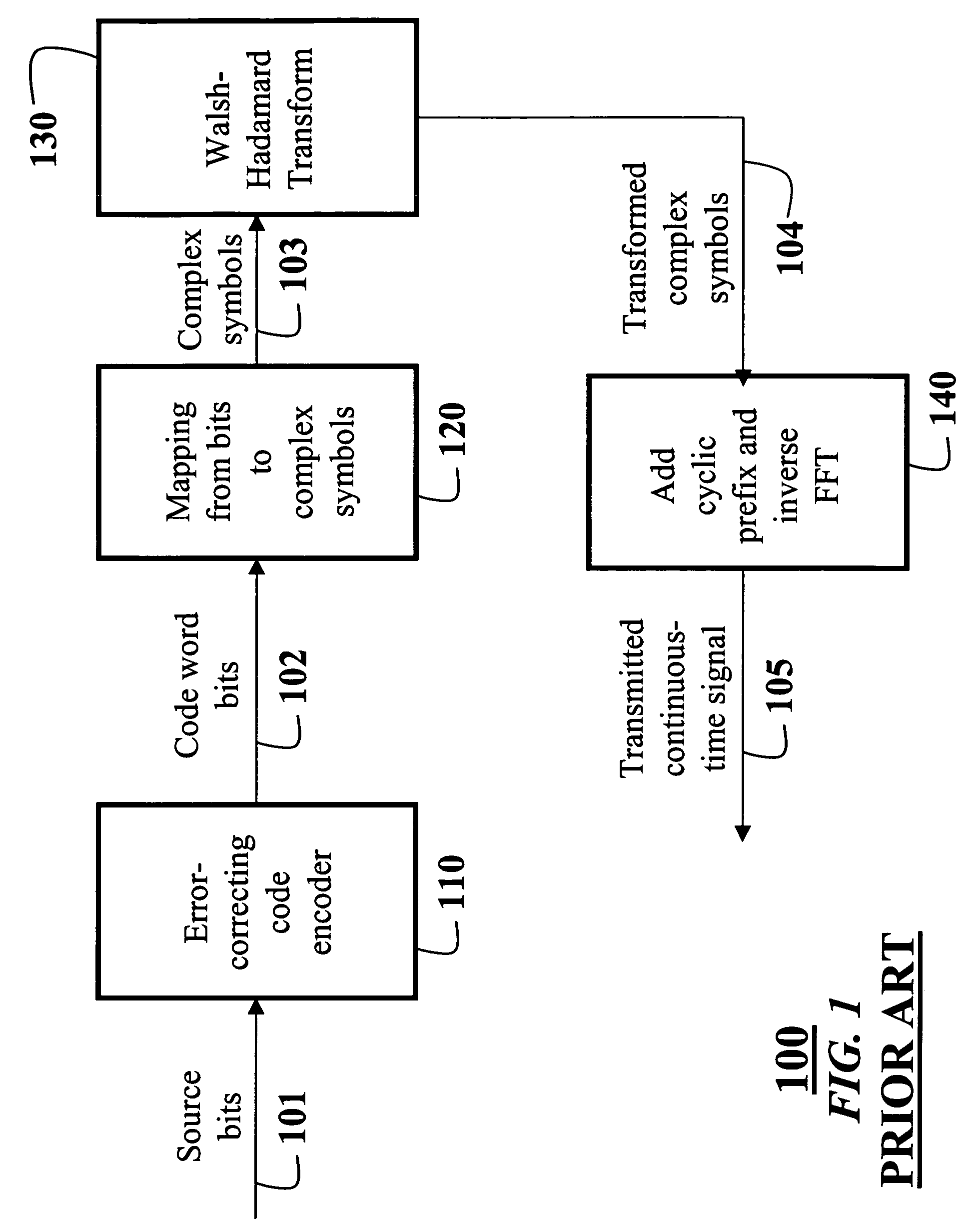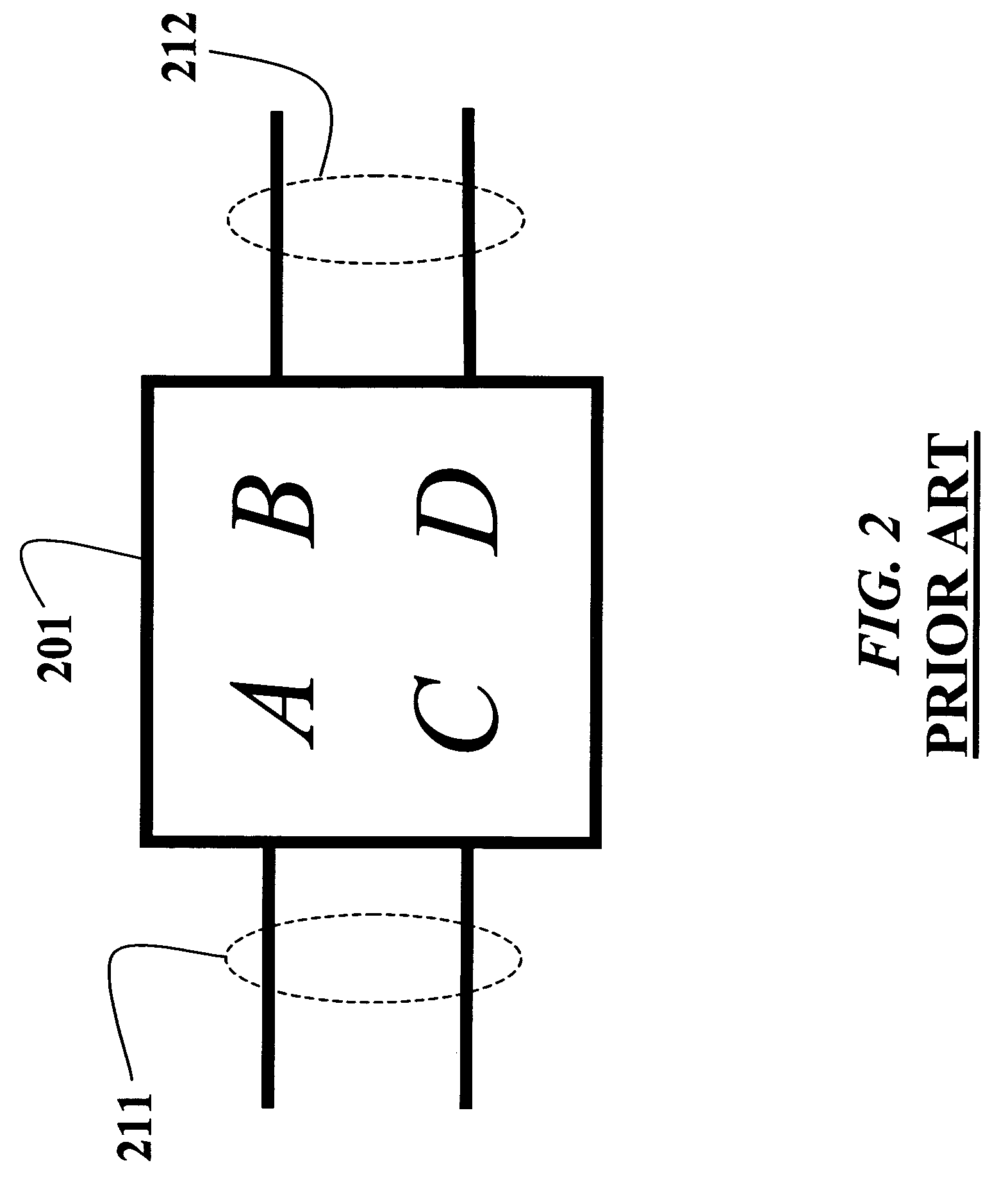Unambiguously encoding and decoding signals for wireless channels
a wireless channel and signal technology, applied in the field of encoding radio signals, can solve the problems of interference between multiple signals that concurrently use the same part of the frequency spectrum, major problem of frequency selectivity of wireless channels, and the subject of wireless communications systems
- Summary
- Abstract
- Description
- Claims
- Application Information
AI Technical Summary
Benefits of technology
Problems solved by technology
Method used
Image
Examples
Embodiment Construction
[0067]FIG. 5 shows an encoder 500 according to our invention. The encoder includes an error-correcting code encoder 510, a mapping unit 520, a block of parallel spreading transformers 530, and modulators 540, all connected serially. The input signal 501 to the encoder is in the form of a sequence of blocks of bits. The blocks are denoted by a discrete time t.
[0068]Each block of bits 501 is denoted by si[t]. The block of bits is encoded into codeword bits 502 using the encoder 510 that uses an error-correcting code (EEC) 511. Alternatively, the block of bits 501 can be passed directly 505 to the mapping unit 520. This is equivalent to using a rate-1 code.
[0069]The output of the encoder of the error-correcting code is a codeword 502 for each block of bits. We denote the codeword bits by cj[t].
[0070]The codewords 502 (or the source bits) are mapped 520 to sub-blocks of complex numbers 503. Any conventional method of mapping bits into “constellations” of complex numbers can be used. In ...
PUM
 Login to View More
Login to View More Abstract
Description
Claims
Application Information
 Login to View More
Login to View More - R&D
- Intellectual Property
- Life Sciences
- Materials
- Tech Scout
- Unparalleled Data Quality
- Higher Quality Content
- 60% Fewer Hallucinations
Browse by: Latest US Patents, China's latest patents, Technical Efficacy Thesaurus, Application Domain, Technology Topic, Popular Technical Reports.
© 2025 PatSnap. All rights reserved.Legal|Privacy policy|Modern Slavery Act Transparency Statement|Sitemap|About US| Contact US: help@patsnap.com



